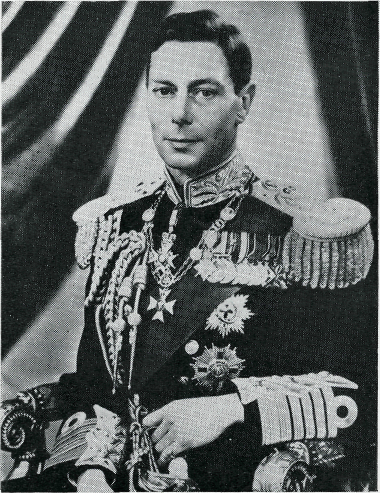
Coventry in 1952/3: (from Alfred Herbert News Vol 31 No 1 Jan-Feb 1957)
Historian and CovSoc Committee member, David Fry, has been studying past editions of the Alfred Herbert Newsletter. These newsletters are much more than just a works newsletter and give an invaluable insight into the thinking in the city at the time they were written. The article below is extracted from 1957 editions of their Newsletter, looking back at a year of activity in the busy post-war city, and is written in the idiosyncratic style of the Alfred Herbert’s employee. David writes….
The King dies and the Queen is crowned. But changes to the city centre continue… new art college, new churches, new art gallery and museum, new mosaic and the less said about the new Broadgate clock the better…and there was always the new cathedral. .End of tea rationing etc.
Early in 1952 it was announced that the Georgian building in Priory Street, only the shell of which remained standing after the bombing of 1940, was to be restored. This decision caused some adverse comment for it was obvious that it would cost a great deal of money to restore and, when it was finished, would probably look somewhat incongruous standing as it would quite close to the very modern-looking cathedral.
News also came that fighting had once more flared up in Korea.
On January 27th, two very dissimilar events occurred.
On that date what was probably Coventry’s oldest street—Cross Cheaping—was closed in order that the building of the new Owen Owen store could be commenced.
The other news was that Princess Elizabeth, who had not long returned home from her Canadian tour, had left London Airport for South Africa, the start of a long Commonwealth tour.
It was very reassuring to see that her father, the King, had so much recovered from his operation that he was able to be present at the airport to see her off.
And then, on February 6th:—”The King Dies In His Sleep”.
The sudden shock of such catastrophic news stunned the entire nation.
Only the previous day he had seemed in excellent health, indeed he had been out shooting, and now…
And now . . . “The King is dead, long live the . . . the . . . Queen”. Tongues tripped unfamiliarly as the ancient usage was, of necessity, altered.
So it was that on February 7th, the young woman—hardly more than a girl in fact— who had left Britain so happily less than a fortnight before returned in sadness, its Sovereign Queen.
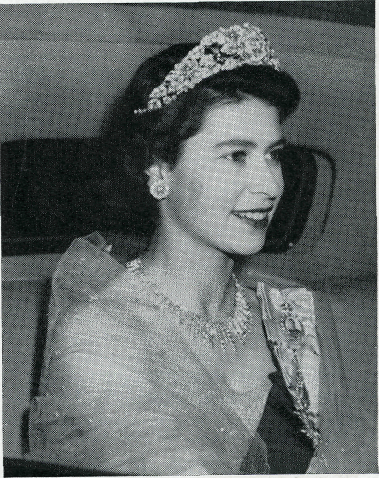
On the following day she was proclaimed Queen Elizabeth II in London and on the 9th the proclamation was read by the Mayor, Councillor Harry Weston, in Coventry.
Two days later, the body of King George VI was conveyed from Sandringham to Westminster Hall, there to lie in solemn state for two days. The great love which his people bore for him was reflected in the fact that in those two days over 300,000 people filed past his bier to pay their last silent homage.
On February 15th, followed by a vast cortege which included many foreign royalties and heads of state, the King was laid to rest in St. George’s Chapel, Windsor.
Not only Britain and the Commonwealth but the whole of the world mourned the passing of this simple, unassuming but undeniably great man.
In Coventry there was a Civic Memorial Service in Holy Trinity Church after which the Mayor laid a wreath on the altar of Coventry Cathedral.
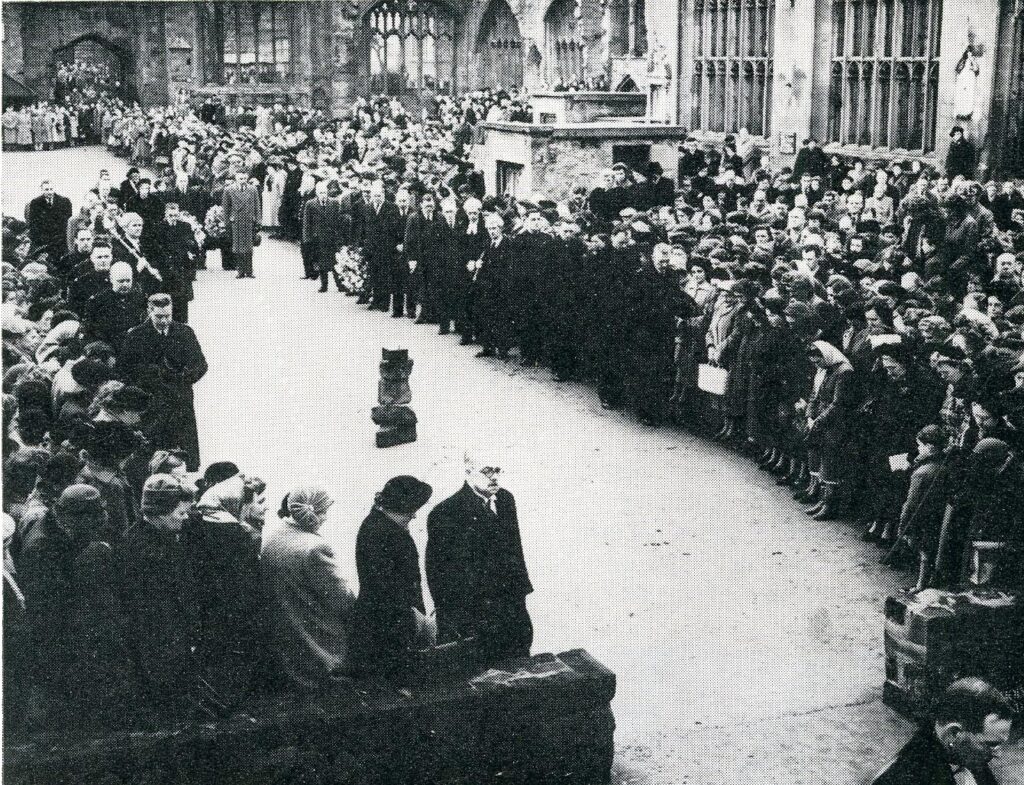
Gradually the numbing shock of the King’s death passed, and everyone began, hopefully, to compare our beautiful young Queen with her illustrious forebear, Elizabeth I. Did the coming of another Elizabeth foretell the coming of another “Elizabethan Age”?
And still the rebuilding of Coventry continued. At the back of the temporary shops facing the Council House, activity could be seen as the workmen started to clear the site for the erection of new Council Offices, while in Cope Street, excavations began for the building of the great new College of Art and Technology.
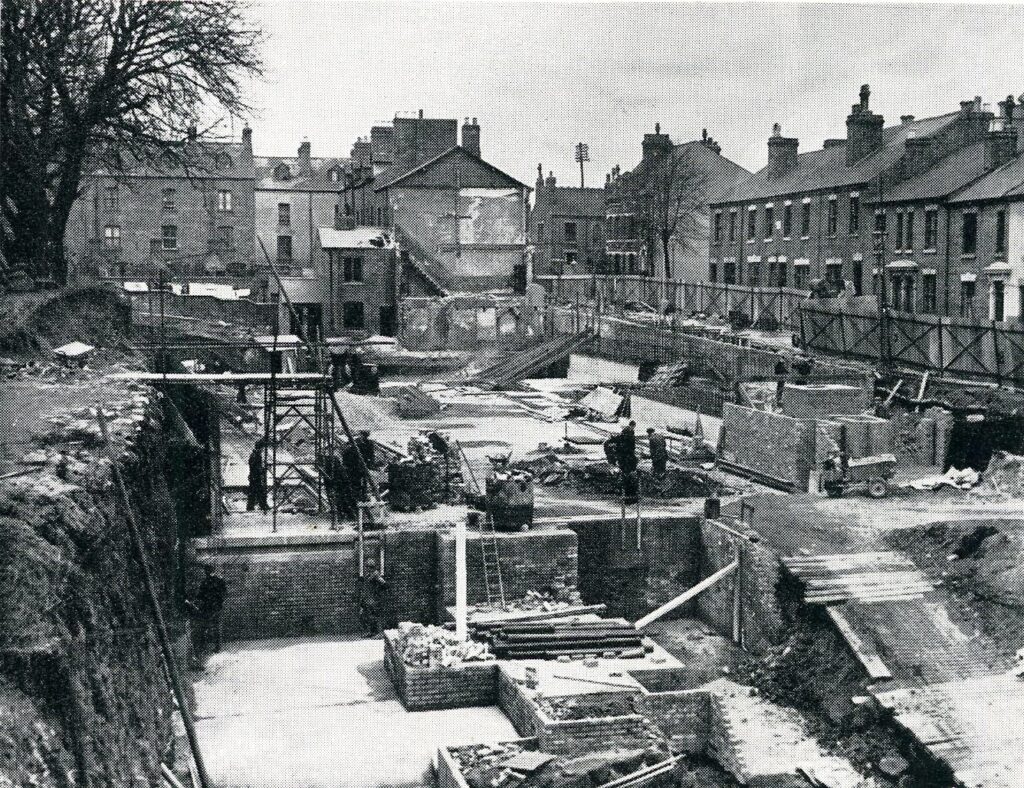
It was perhaps ironic that, at a time when the entire city seemed to be humming with rebuilding, fire should sweep through the magnificent 600 feet long office block at Wickmans leaving it a total wreck with damage estimated at £250,000.
On March 26th, the Archbishop Canterbury, Dr Geoffrey Fisher, paid his first visit to Coventry.
After a civic reception at the Council House, His Grace attended a luncheon given by Sir Alfred Herbert at the Masonic Hall at which more than 80 local industrialists were present.
The purpose of the Archbishop’s visit was to raise a fund in order to lift the minimum stipend of all clergy in the Coventry diocese to, £500 a year. As a result of his appeal, the industrialists present very generously agreed to raise the sum of £100,000 for this purpose.
Before returning to London, the Archbishop addressed a meeting of Coventry clergy in Holy Trinity Church and also visited the ruins of Coventry Cathedral.
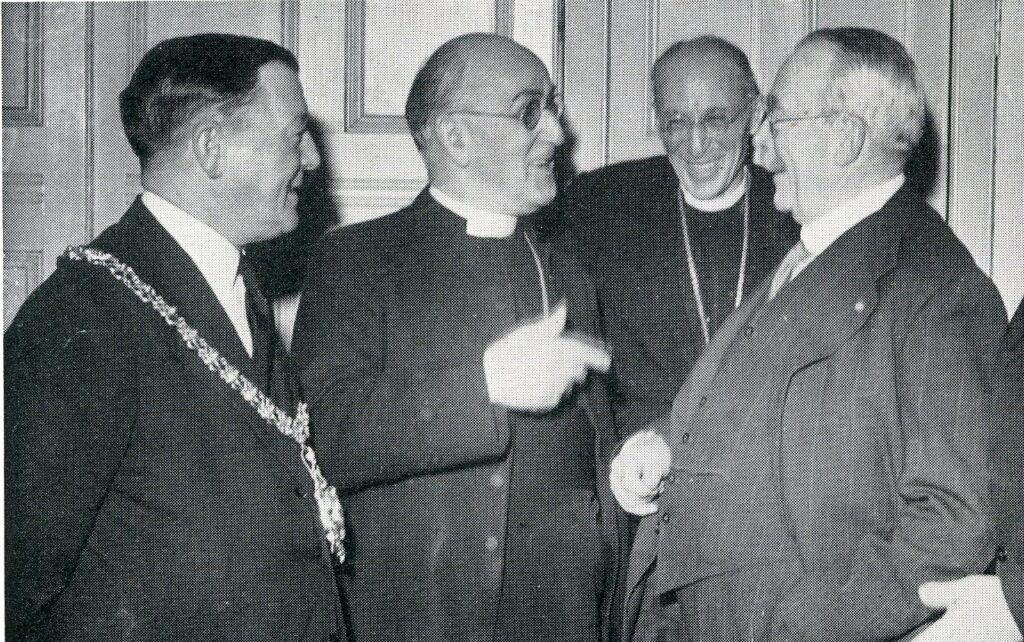
And faster and faster grew the tempo of building and rebuilding in Coventry. On May 10th, Mr. Stanley Harley opened the new Methodist Church at Canley; on June 4th work began on the first building in the new Precinct, the huge Woolworth stores; on the 9th, Lord Iliffe opened the new West Orchard Congregational Church in Cheylesmore and in Tile Hill the Church of Our Lady of the Assumption was opened by the Right Reverend Monsignor Canon Emery. In August came the news also that repair work to the old cathedral walls was to be started.
It was in August too that disaster struck the well-known little town of Lynton. Raging floods, pouring from the moors behind the tiny town almost completely devastated it, doing untold damage.
The Mayor of Coventry, Alderman B. H. Gardner, immediately launched an appeal to which the citizens at once very generously responded to the extent of £9,000.
In September, construction and destruction again walked hand in hand. On the 9th plans for the new £300,000 Art Gallery and Museum were announced, while six days later Harvey’s warehouse in Lincoln Street was completely destroyed by fire causing damage estimated at £16,000.
The beginning of October brought more good news of the rationing system, for on the 2nd it was announced that the ban on shop-window lighting was ended while on the 5th the whole nation of tea-drinkers gaily hurled in “one for the pot” to celebrate the end of tea rationing.
On October 16th, M. Rene Antonietti of Italy started on a work of art of an entirely new character for Coventry—a huge picture in mosaic of the Coventry Martyrs, which was situated in the entrance to the Hertford Street subway.
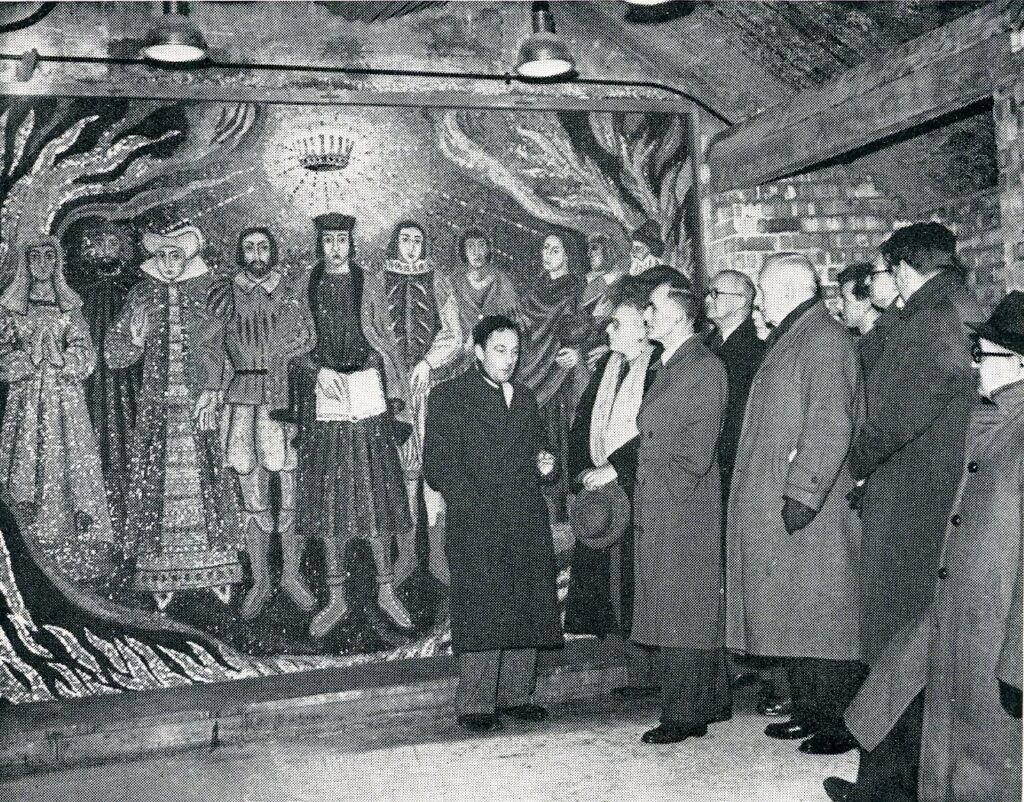
This naturally gave rise to some speculation, as obviously it would be something very much out of the ordinary.
On the following day a further piece of news also gave rise to some speculation for on that day it was announced that the contract for the stained glass windows for the new cathedral had been given to experts nominated by the Royal College of Arts.
But… windows? Ten of them, each 70 feet high? It sounded impossible!
November brought a tragic reminder of the nights of agony that had made all this rebuilding possible for on the 15th the memorial to Coventry’s civic dead, that had been erected at the site of the communal grave in London Road Cemetery, was dedicated by the Bishop of Coventry, Dr Neville Gorton, in the presence of the city’s civic dignitaries and hundreds of bereaved onlookers.
On December 15th, it seemed that a white Christmas was in store, for Nature, vying with the lavishness of the people of Coventry who had drawn half a million pounds out of the banks to spend on the festive season, had mantled the entire country with a thick blanket of snow which, even in Coventry, was 9 inches deep. Unfortunately—or fortunately —heavy rain the next day turned it into the more usual green Christmas.
The year ended with a gesture from West Germany that at once pleased, puzzled and baffled Coventry. The German Christians made an offer—which was accepted—to provide a window for the new cathedral Chapel of Unity as a “sincere expression of their feeling for mutual reconciliation”.
There were some who would have indignantly rejected the offer, and yet
“Forgive us our trespasses as we forgive them
The New Year opened with a feeling of anticipation.
It was Coronation Year and the entire nation hoped for the beginning of a new Elizabethan era.
In Coventry the Council almost allowed itself to be swept away on a wave of exuberant optimism for, among the many proposals it put forward to celebrate the Coronation was the building of a Winter Garden in the Memorial Park at a cost of £90,000.
This proposal, coming as it did, in a period of ever-increasing rates, caused such a storm of criticism that it was eventually dropped.
Then, on the night of January 31st/February 1st, Nature, in one of her ugliest and most ferocious moods for many years, brought disaster to the sister maritime nations of England and Holland.
On that night a devastating storm, raging down the North Sea, burst through the coastal defences of the East Coast and Holland with such unparalleled fury that 290 people were drowned in England and 1,350 in Holland, while damage of many millions of pounds were caused.
As usual, Coventry, which knew the full meaning of death and destruction, immediately sent assistance—£6,000 to the East Coast and £3,000 to Holland—at the same time opening an East Coast Relief Fund. So generously was this fund supported that by the end of the month it stood at over £16,000.
Again came news of the death of a nation’s leader. On March 5th, Josef Stalin died. It could mean another momentous turning point in the history of the Russian people. But would it? The world can only wait— and hope.
For some time past, Queen Mary, who was 85 years of age, had been suffering from a recurrence of old gastric trouble. It was therefore with very deep concern that the nation read, on March 26th, a bulletin which said, “During the past hours, Queen Mary’s condition has become more grave”. Just how grave was not realised until the following morning when it was announced that Her Majesty had died in her sleep.
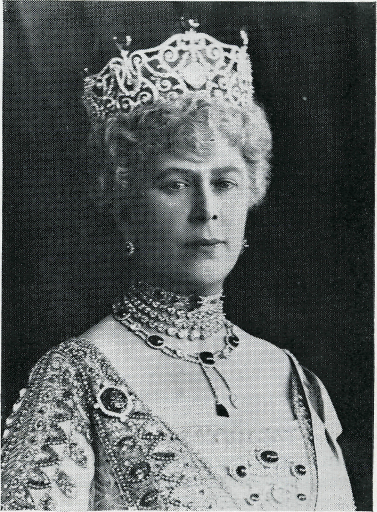
On the last day in March, this greatly loved Queen was laid to rest at the side of her husband, King George V, in St. George’s Chapel.
It was a tragic interlude at a time when Coventry was bursting into new life in all directions.
On March 21st, the first shop was opened in Broadgate House, on April 29th Sir Alfred Herbert, by starting a pump at Strensham, Worcestershire, officially inaugurated the two million pound Severn Water Scheme, work had begun on the site for the new Marks and Spencer store in the Precinct, while on May 2nd, Lord Silkin visited the city and after unveiling the Martyrs Memorial Mosaic, officially opened Broadgate House.
It was on this day of Lord Silkin’s visit that the new Godiva clock operated for the first time before an astonished and somewhat incredulous public.
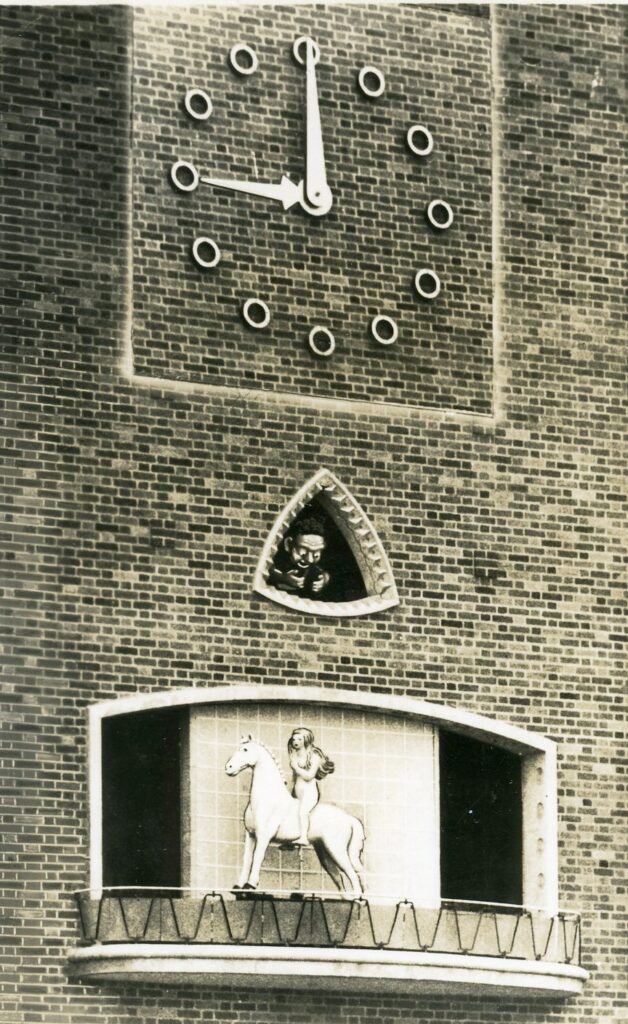
It was immediately a target for derision. “Vulgar and lewd”, “Abominable travesty”, “Vulgar caricature”, and “Burn them” were some of the comments hurled at this product of the local Technical College.
Like many other storms, it eventually blew itself out, more quickly than perhaps it might have done, owing to vandalism of a particularly despicable nature being brought to public notice.
Within 14 days of the unveiling of the Martyrs Mosaic no less than 8 stones had been prised from it. In the following week further damage was done, with the result that it was finally boarded up.
In the meantime, preparations for the Coronation on June 2nd were in full swing and public buildings, factories and streets were burgeoning with flags and bunting. Undoubtedly, June 2nd would be a great day in this ancient Royalist city. But the Queen’s Gracious Majesty made of June 1st an equally great day, for on that day it was announced that she had granted the city a Lord Mayoralty.
It was somewhat of an anti-climax that Coronation Day dawned wet and cold, but the people of Coventry, who now had double cause for rejoicing, were not to be baulked by the weather. Street parties were hurriedly switched to halls, garages and homes, and after the magnificent ceremony in West-minster Abbey, which was watched for the first time by millions of television viewers, the celebrations went on far into the night.
“Long Live the Lord Mayor and God Save the Queen”.
